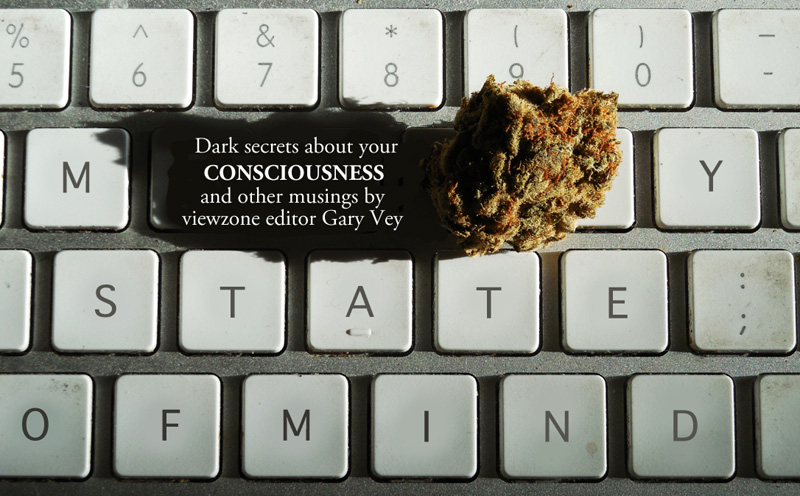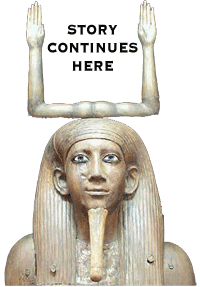
"[thoughts] often enough crept quietly into my thinking without my suspecting their importance ... in other cases they arrived suddenly, without any effort on my part ... they liked especially to make their appearance while I was taking an easy walk over wooded hills in sunny weather!" -- Hermann von Helmholtz
Consciousness is not necessary for Solving Problems
Let's say I ask you to multiply 23 by it self three times. If you're like me you will need to find a piece of paper and perform the individual steps of multiplication. Whatever talents I learned when I was young, math was not one of them.
But some people do have this ability. Some can give you answers to mathematical equations with accuracy to a hundredth decimal place! A perfect example is Daniel Tammet - The Boy With The Incredible Brain who appears in this YouTube video reciting the long version of pi.
In the video it's clear that these incredibly complex calculations are not conscious work but the results are known to Daniel instantaneously. What's even more significant is that his answers are always correct.
I previously mentioned some famous scientists and thinkers whose inventions and discoveries were made in this unconscious manner. These are also examples of problem solving of a more conceptual nature not involving mathematical calculations. Essentially, all problem solving takes place in the unconscious.
Savants
The best known example of a savant phenomenon is the character portrayed in Rain Man by actor Dustin Hoffman. These extreme cases of apparently genius abilities, carried out in the unconscious, are rare (only about 50 world wide) and usually follow some childhood trauma to the Left Hemisphere. I felt it fair to include them. This type of deep thinking unconscious might also be found in Asperger's Syndrome and Autism Spectral Disorders.
Some have suggested that the dysfunctional aspects associated with these syndromes is inability of the unconscious to express itself (report) to the conscious in a language that can be used as a narrative of reality. This will make more sense later on in this story.
I think I have made the point here. Consciousness is NOT necessary for speaking, listening, reading, writing, learning, remembering, making judgements and decisions, solving problems or reasoning. If you have your doubts, please then just consider that it might be possible. Then continue reading.
We all do amazing things every day in our unconscious processors that are hardly ever appreciated by our consciousness. We estimate the timing of vehicles when we cross a busy street, we can predict the emotional state of a friend to tell the best time to ask a favor... we can plan an alternate route in a traffic jam... our brains are very capable of doing these and many more things in the background.
Jaynes said, "Our minds work much faster than our consciousness can keep up with."
What, then, is consciousness?
This is a good time to remind you that Jaynes theory proposed that consciousness is a recent mental acquisition, perhaps only 3000 years old. There's a lot of history and civilization prior to 1000 BCE so how can this be possible?
We've already considered that so many of the mental activities we think are endemic in human consciousness are, in fact, automatic. Without consciousness people can do all of the things that make life possible. They can farm, raise animals, live in villages and towns, have leaders and, most importantly, they can have a system of belief. I don't necessarily mean a religion or a belief in a deity. It could be belief in an idol, a king, a tribal leader or even an esteemed family member.
To see what these pre-consciousness people might have been like, we should first review what consciousness encompasses. So here are the essentials of consciousness as defined by Jaynes:
1. Consciousness is a process and not an object
It doesn't exist anywhere specific in the brain. In fact, it can sometimes be demonstrated to be outside the brain... If I ask you to remember the last time you were walking in a garden or on the beach, you will undoubtedly recall a memory that views yourself from an outside perspective - looking at yourself instead of recalling the experience through your own eyes.2. Consciousness operates by way of analogy
Things become real to us if they can be associated with previously experienced things. There is nothing that is in consciousness that was not an analog for something that was in behavior (experience) first.3. Consciousness constructs an analog space (environment) with an analog "I" that can observe the space and move about in it.
If I ask you which way the door to your room opens, you will likely run a virtual image of your room in your consciousness and imagine yourself examining or opening the door. The ability to imagine environments that mirror the real outside world AND to place the perspective from our own view is what is being described here.
Consciousness creates and uses a virtual world based on language and metaphors. It creates an avatar for us ("I am") to interact with it and allows us to project future outcomes based on memory and the continuous internal narrative that is the script for what we call reality.
But the main thing to remember is that CONSCIOUSNESS = IDEA OF SELF (The "I").
Implicit in this is also the development of what is called Theory of Mind where the "I" recognizes that other people also have an "I" and that each individual perceives the world from their own perspective. This is something that develops in humans at about age 5. We'll talk more about Theory of Mind later.
If Jaynes' theory that consciousness is 3000 years old is valid, we ought to be able to look at human expression -- such things as literature, mythology, legends and art -- to see evidence of this momentous transition from an unconscious, reactive civilization to one full of emotion and ego.
And this is where it gets very interesting.
(Ouch... later ;-)
